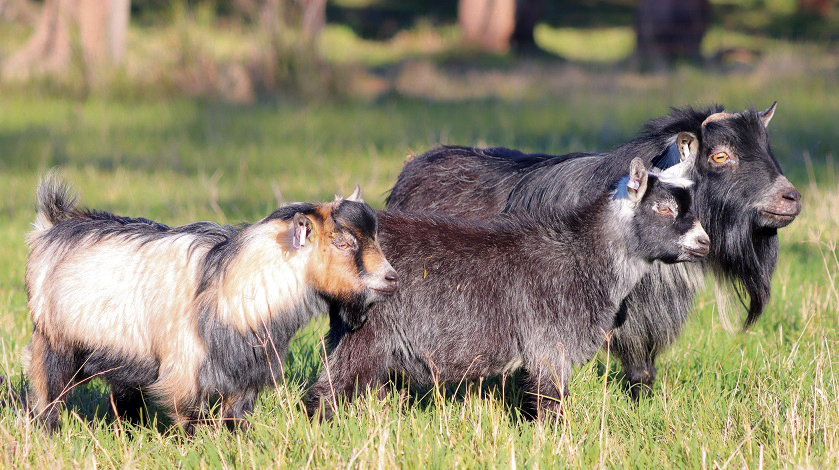Appreciating the little things in life is an easy task for Christine Falconer, who spends her days in the company of pygmy goats. These curious and joyful creatures literally have spring in their step and represent three decades of Christine’s dedication to breeding miniature and pygmy goats through Plumbago Miniature Goat Stud.
Christine had owned Saanen goats for many years before commencing her journey into becoming a recognised foundation breeder of miniature goats in 2002.
“I scoured the whole of WA for little goats and I found some on a station up north,” she explains.
From that initial line, Christine spent ten years perfecting her miniature herd, selectively breeding for size and conformation before the opportunity to breed pygmy goats arose.
“In 2012 I got to know Paul Hamilton from Semtech Animal Industries. The following year, Paul brought the first ever full-blood pygmy embryos into Australia.”
Since then, Plumbago have run a successful artificial insemination program every year with Semtech, with the aim to keep increasing the genetic percentage of pygmy each generation.
Pygmy goats are native to West Africa and were introduced to America in the 1950’s. They are defined by their full-barrelled, well-muscled body; with head, neck and legs short in relation to their body length. They are a hardy animal with a good nature, making them a great alternative pet option. They are an engaging animal just as likely to leap into your heart as they are your lap.
Pygmy goats have gained a lot of traction on social media in recent years, their adorable antics liked, shared and re-tweeted across the globe. This has helped drive a huge surge in popularity; Christine and other WA breeders cannot keep up with the demand.
“The size appeals, the look of them – and the friendliness!” said Christine. “You can walk them on a lead, they come to their name, and become part of the family.”
Although often compared to a dog in terms of their size and personality, pygmy goats are still classed as livestock and have different care requirements to a domestic pet.
“You need to check with your local shire regarding having a pygmy goat,” said Christine. “They need a bit more space than a traditional backyard and they need good fencing or they will get in your garden!
“The goats also need shelter and —- especially in the warm WA climate —- they need to be hand fed. There’s no way you can stick them in a paddock and just leave them. Mine live on a grain mix, oaten hay and pasture.”
In addition to this, the goats also require their hooves to be trimmed approximately every six weeks and to be wormed and vaccinated twice a year. Christine also recommends buying at least two pygmy goats as they are a herd animal.
“If you do the groundwork and keep them well-fed, they are very hardy little animals. I love that they are easy to manage, I enjoy their personalities and I love to look at them – it’s the whole package!”
Christine was running a large stud of over thirty pygmy goats until a freak accident a few years ago curtailed operations.
“I had sold some goats to the Eastern States, and my husband Steve and I were loading them to go on the plane. One of the girls took off, causing me to somersault and land very badly.
“I broke my femur, my lower leg bone and detached my knee. I had a full knee replacement and basically had to learn to walk again.
“I sold everything. I said, ‘Right that’s it. Enough.’ But afterwards it was horrible…there was something missing. After 30 years of having goats, and my passion developing the pygmy goats, I just couldn’t walk away.
“I managed to get a few of my lines back and started again, with the support of my lovely husband. I’m going to stay smaller —- managing 30 goats was like a second job.”
Paul and Christine and one other pygmy goat enthusiast have also started the National Pygmy Goat Association of Australia.
“It is a really progressive and friendly organisation; we have a huge database with over 21,000 animals. We are affiliated with the USA Pygmy Association and also the New Zealand Pygmy association,” Christine explains.
“Australian pygmy goats follow the same standard as the US pygmy, the only difference is we are allowing every colour —- we think it’s exciting to show the diversity! in America it’s very uniform, what’s accepted in shows – we don’t want to be stuck in that.”

“We have done some virtual shows and judges from America gave us great reviews on the animals we are breeding —- they are very excited about what we are doing.”
The National Pygmy Goat Association of Australia will have a display at the Gidgegannup Show on 30 October. They are always looking for more breeders to keep up with this unprecedented demand and offer full support and advice.








